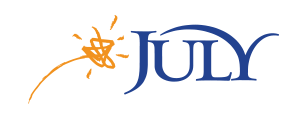The beginning of the year is a popular time for employers to review their retirement plans for compliance and effectiveness. This year, when you’re evaluating your 401(k) plan, you may want to consider how, in addition to giving your employees a way to save for retirement, the plan could be used to improve your business’ bottom line.
Consider whether your business is taking full advantage of the basic benefits of sponsoring a retirement plan or if modifying your plan’s design could make it more valuable to the company. Employers generally sponsor retirement plans to help them recruit and retain qualified employees and for the tax advantages. Here are some business goals your plan might help you accomplish.
Protect Profits for Key Employees
Professional service firms and small businesses, in particular, may want to look at optimizing the plan’s ability to accumulate capital for certain key employees and owners/stockholders in a tax-deferred and cost-effective manner. One way is to make sure that the total plan administrative costs, including employer contributions, are less than the income and FICA taxes that would be due on those contributions if paid as compensation. The fact that plan account balances are protected in bankruptcy is an added benefit for this group of employees.
Cut Training Costs
Has your business incurred high training costs due to turnover of managers or other skilled personnel who aren’t viewed as “highly compensated” under the tax law? Use your 401(k) plan as a retention tool. One idea: Add a profit sharing feature to your plan that covers only these employees. Using a three-year cliff vesting schedule (100% vesting after three years) for the profit sharing contributions may help limit your training costs by lowering turnover and, thus, lessening the need for training. The plan could also allow withdrawal of the funds once they’d vested as an added retention incentive.
Increase Productivity
A management change often causes productivity to drop — sometimes significantly — while employees familiarize themselves with the new manager and his or her expectations. Bringing in a new employee at any level can decrease productivity temporarily while that employee learns the job. Using plan features to retain managers and trained employees can help maintain productivity levels.
Including plan features that employees want, such as a variety of investment options to choose from and investment tools, education, and assistance to help them plan for retirement, can increase productivity. Employees who are happy with their jobs and appreciate their benefits generally are more committed to their employer and more productive in their work.
As a plan sponsor, you can foster commitment and productivity by regularly providing employees with plan information and financial education. Providing regular communication about benefits can sometimes increase commitment almost as much as the benefits themselves. Employees feel you, the employer, care about their future.
Improve Customer Satisfaction
Happy employees usually provide better service and leave customers more satisfied. In addition to using your 401(k) plan to generally improve work force morale, you might want to consider taking specific steps to tie the plan to customer satisfaction. For example, you might tie profit sharing contributions or discretionary employer matching contributions to feedback you receive from periodic surveys of your customers. You might engage employees by conducting meetings to update them on customer satisfaction and expected contributions.
Of course, every employer’s needs are different. We would be happy to review your plan with you and discuss ideas for using it to accomplish specific business objectives.
“Using plan features to retain managers and trained employees can help maintain productivity levels.”



